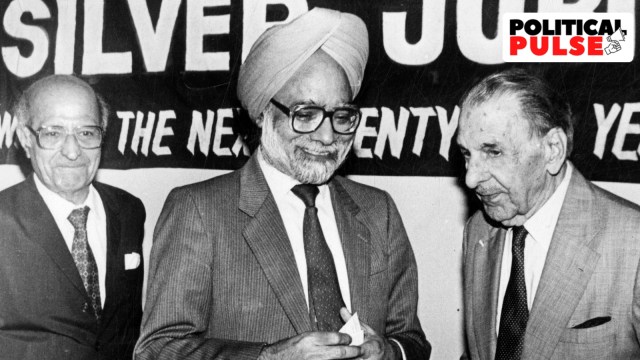Former Prime Minister Manmohan Singh was a game-changer in India’s foreign policy and strategic heft as he led India’s global reputation in ways very few Indian PMs have done in the last seven decades.
In the post-Cold War era, Singh ushered in India’s global standing through the Indo-US nuclear deal. That was India’s moment in the sun, and Singh at that time staked his government’s survival for the nuclear deal.

Since 2008, when the Indo-US nuclear deal was signed, India’s collaboration and cooperation with the world, especially the West, increased because of the trust that the deal generated. Singh developed a rapport with then US President George W Bush, who was told by the Indian PM that Indians loved him (Bush). The cooperation with Japan, France, Australia, Germany and others increased because of the nuclear deal that ended the technology-denial regime with India.
Singh, who envisioned the process which led to India being perceived as a “trusted” partner, developed ties with the western partners to aid India’s growth and rise. As someone who had ushered in the economic liberalisation in 1991, he knew the value of India’s growth which would develop into the world’s largest market potential — something that the future government under Prime Minister Narendra Modi would capitalise on.
Singh, who steered the country’s economy through the global financial crisis in 2008, was the go-to global leader when the G20 leaders met post financial crisis. From US President Barack Obama to British Chancellor Gordon Brown, Japan PM Shinzo Abe to German Chancellor Angela Merkel — Singh was their financial “guru”, as Obama once described him.
Singh oversaw the transformation of India’s ties with the West — US, France, Japan and Germany, and he was instrumental in developing the Quad grouping as Japanese PM Abe pushed for it.
Singh, who wanted to develop strong ties with the US, was also very clear-eyed on China, as Beijing under President Xi Jinping started pushing the envelope. The first border standoff took place in April 2013, which Singh did not back down, resulting in the issue being resolved in three weeks.
Story continues below this ad
But, his biggest challenge came from Pakistan, with which he had hoped to repair ties. The Mumbai terror attacks in November 2008 led to calls for retribution, but he exercised “strategic restraint” while using coercive diplomacy to name and shame Pakistan. That paid dividends as the world — especially the West — saw Pakistan as a perpetrator of terrorism.
He tried to engage with Musharraf, and got a commitment to not let terror groups target India — a claim Singh never took in face-value, but was a win. He later engaged with the civilian governments, and even wanted to visit Gah — his birthplace in Pakistan — but the political compulsions at home prevented him from visiting his native village. In fact, he sanctioned back-channel talks with Pakistan under Satinder Lambah, which came up with a formula, but did not come to fruition.
But, Singh’s ties with the US and his apprehension of Pakistan was evident in a conversation that this reporter had back in April 2009. The occasion was the launch of Narayana Murthy’s book, “A better India, A Better world” published by Penguin, at the PM’s residence on Race Course Road, when Singh told The Indian Express that a “worried” New Delhi has been “assured” by Washington that Pakistan’s nuclear weapons are “safe”, amid growing concern that rogue elements in Pakistan might have access to the nuclear arsenal. India didn’t have access to the Pakistan establishment on this matter, and the US had given this assurance since they had direct access.
Prime Minister Singh said when asked whether India was worried at the developments across the border and the nuclear arsenal in Pakistan, “There is cause for worry. But we have got an assurance that their nuclear weapons are in safe hands. The Americans have given us this assurance, since they have access (to the Pakistan establishment)..we don’t have direct access.”
Story continues below this ad
He also oversaw India’s ties with Bangladesh improve, as Sheikh Hasina came to power in Dhaka in 2008. While he worked on India’s strong ties with Bangladesh, West Bengal Chief Minister Mamata Banerjee put a spanner on the Teesta river water-sharing pact.
Singh was also the oasis of calm when Maldives moved towards a multi-party democracy as President Mohamed Nasheed became the President ousting Abdul Mamoon Gayoom after three decades, and Nepal moved into a multi-party democracy after Maoists led by Pushpa Kamal Dahal Prachanda came to power, dislodging Nepal’s royalty. The former Prime Minister always urged the neighbouring countries’ leaders to maintain peace and stability in their countries, and be a part of India’s economic growth and benefit from it.

































